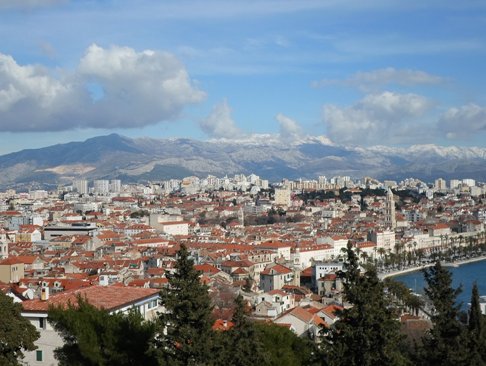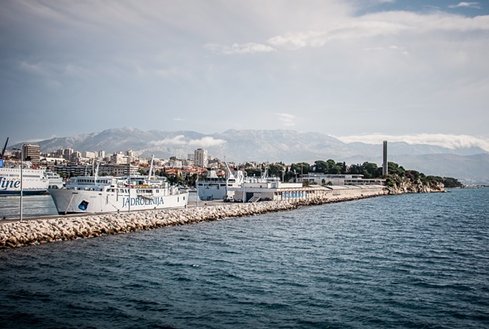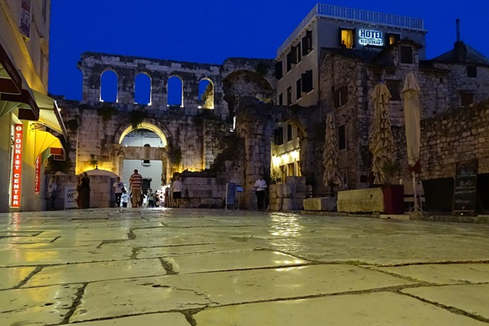Split – a city to be discovered
Posted by: kirsty_wilson in Europe, tags: Croatia, Museums, Music, Night Life, Palaces, UNESCO
The most famous site in the city is the Diocletian’s Palace, built by the Roman emperor Diocletian in 3rd century AD. The historical core of the city developed around the Palace whose walls stands preserved to this day, and the Palace found its place on the UNESCO World Heritage List. Other great monuments of culture are the Cathedral of St. Domnius, patron saint of the city, the statue of Gregory of Nin, a medieval Croatian bishop, plus many museums and galleries exhibiting pieces from the city’s long history. Even if you’re not so interested in visiting museums, we suggest visiting the Maritime Museum and the Gallery of Fine Arts as they provide the best overview of Split and Croatian culture.

The beaches of Split are very popular among locals and tourists, as the Adriatic is warm and clean and the beaches are surrounded by parks and pine trees. The Marjan Park is a perfect place for a relaxing afternoon stroll and the most popular beach is Bačvice, where the locals engage in a water game called ‘picigin’, similar to handball. Ask them if you can join and enjoy the game yourself, since the locals are usually open to foreign visitors. And when you get tired, have a cup of coffee or a beer at one of the bars at the Promenade. Drinking your coffee for a long time and just enjoying the sun is also a vital part of Split culture!
Nightlife in Split is rich and diverse; there are many late-night coffee shops, bars, nightclubs and beach bars. Rock and music lovers will want to check out the Kocka or the O’Hara, where you can hear local indie & underground bands, those who like electro music will want to visit Hemingway Split and the Bačvice Bar, hosting both domestic and international DJs. During the summer there are some large music events as well – the biggest being the Ultra Music Festival, attracting more than 30 000 people from all over the world.
Split is also a city of sports; the football club of Hajduk is one of the city’s most recognizable symbols, with a vast army of supporters throughout Croatia. You can try out cycling, tennis, golf and various water sports, such as waterskiing and diving.
As in any major tourist center in Croatia, there are plenty of fast food diners and shops in the city, but it would be a shame if you didn’t try the Dalmatian cuisine and at least some of Split specialties. The traditional cuisine is based on fish, herbs, olive oil and boiled vegetables; some famous dishes include grilled sardines, squids, octopus salad, cuttlefish risotto, tuna and shrimps, accompanied by domestic wines or beers. These can be found in virtually all taverns and restaurants in split, just search for a sign stating ‘konoba’ (a type of tavern/restaurant) and enjoy your food!

We also encourage you to visit islands and towns in the vicinity of Split as they’ll give you a better picture of how beautiful Dalmatia is; start with the islands of Brač and Hvar, the nearby towns of Omiš and Trogir and you could even visit Biokovo and Krka National Parks. But even if you prefer to stay in Split, the city provides such a wide range of attractions that you’ll have your hands full just enjoying them

 Entries (RSS)
Entries (RSS)